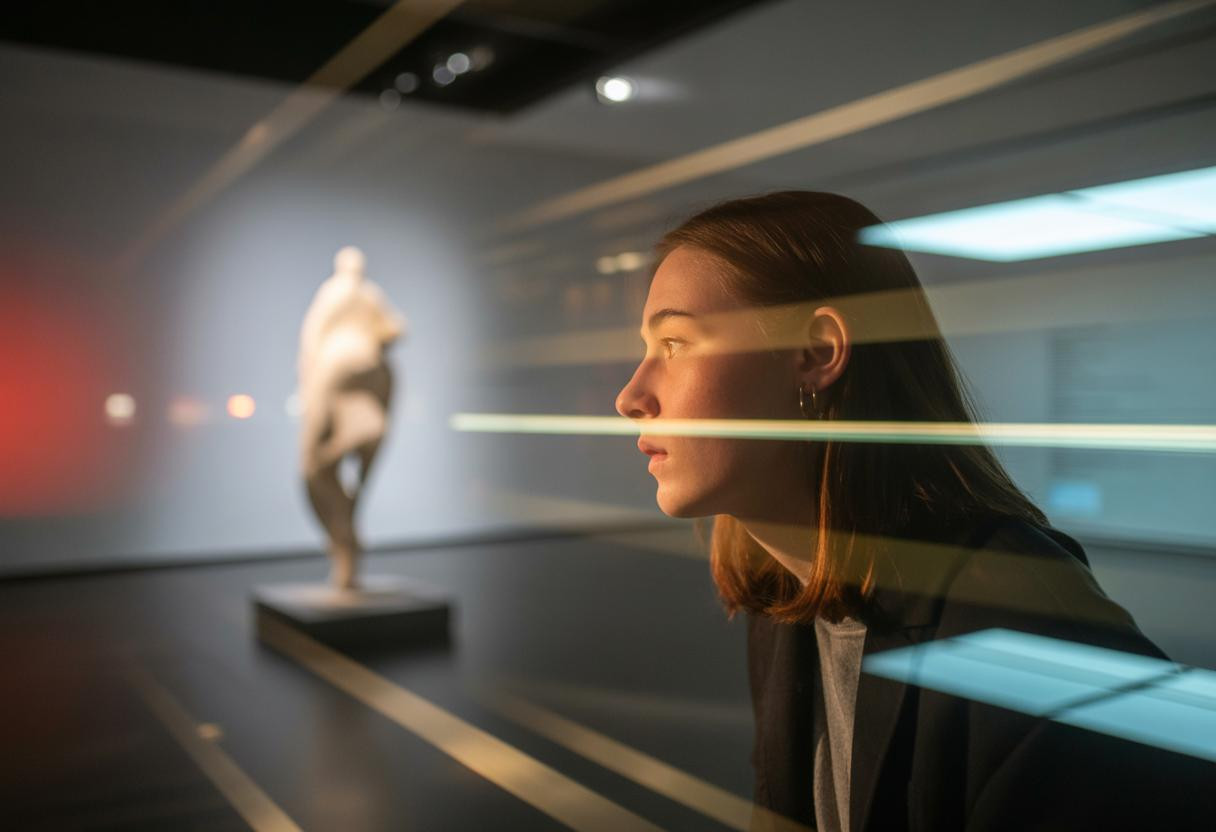Looking at art might actually make you smarter — here’s what Cambridge scientists just revealed. A groundbreaking study from the University of Cambridge has discovered that contemplating artistic beauty significantly enhances our ability to think abstractly and see the bigger picture. This finding offers compelling evidence that museum visits aren’t just culturally enriching but might actually transform how our brains process information.
The surprising connection between art and abstract thinking
Researchers at Cambridge’s prestigious Kettle’s Yard gallery invited 187 participants to view ceramic artworks by Lucie Rie. The beauty group, instructed to contemplate and rate the aesthetic qualities of each piece, scored an impressive 14% higher on abstract thinking tests compared to the control group who merely matched drawings to objects.
“Engaging with the beauty found in art can enhance abstract reasoning in ways we haven’t fully appreciated before,” explains Professor Simone Schnall, who led the research. “It may actually transform our perspectives on life.”
How art creates “psychological distance”
When we lose ourselves in artistic beauty, we experience what psychologists call “psychological distancing” — stepping back from immediate concerns to see broader patterns and connections. This mental shift is like climbing to a higher vantage point where the landscape of ideas becomes clearer and more interconnected.
The effect was particularly pronounced among participants with artistic hobbies, who showed a remarkable 25% improvement in abstract thinking when focusing on beauty. This suggests that regular creative engagement might amplify our cognitive abilities, similar to how astronomers gain new perspectives by viewing cosmic phenomena.
Beyond happiness: The unique emotional power of art
Intriguingly, while participants reported feeling more “moved” and “inspired” (a 23% increase in transformative emotions), they didn’t report greater happiness. This suggests art’s cognitive benefits aren’t simply about mood enhancement but involve a distinct mental transformation that occurs when engaging with beauty.
A remedy for digital-age thinking
In our screen-dominated era, we often default to concrete, procedural thinking. Art appreciation offers a powerful antidote, similar to how certain lifestyle practices counteract modern health challenges.
“People today are often tethered to their devices, thinking in very concrete terms,” notes Dr. Elzė Sigutė Mikalonytė, co-author of the study. “Beauty appreciation helps us detach from immediate practical concerns and adopt broader perspectives.”
Simple ways to boost your abstract thinking through art
- Quality over quantity: Spend 10 minutes deeply engaging with one artwork rather than scanning many pieces
- Ask yourself what feelings or thoughts the piece evokes, not just whether you “like” it
- Look for connections between the artwork and broader themes in life
- Visit galleries with specific intentions to contemplate beauty, not just to see everything
Art’s cognitive benefits mirror other mindful practices
The mental shift that occurs when engaging with art shares similarities with benefits observed in those who practice consistent mindfulness. Both practices pull us out of autopilot thinking, creating space for more nuanced mental processing.
Creating your own artistic practice
- Schedule regular visits to galleries or museums as “mental workouts”
- Maintain an art journal recording your responses to beautiful works
- Consider how artistic principles like balance and harmony apply to daily challenges
The quiet power of beauty in your life
Much like being drawn to thoughtful listeners, our attraction to beautiful art may reflect a deeper cognitive need. By cultivating this relationship with art, we’re not just entertaining ourselves—we’re literally rewiring our brains to think more abstractly, creatively, and compassionately. Isn’t it time you scheduled your next gallery visit?
